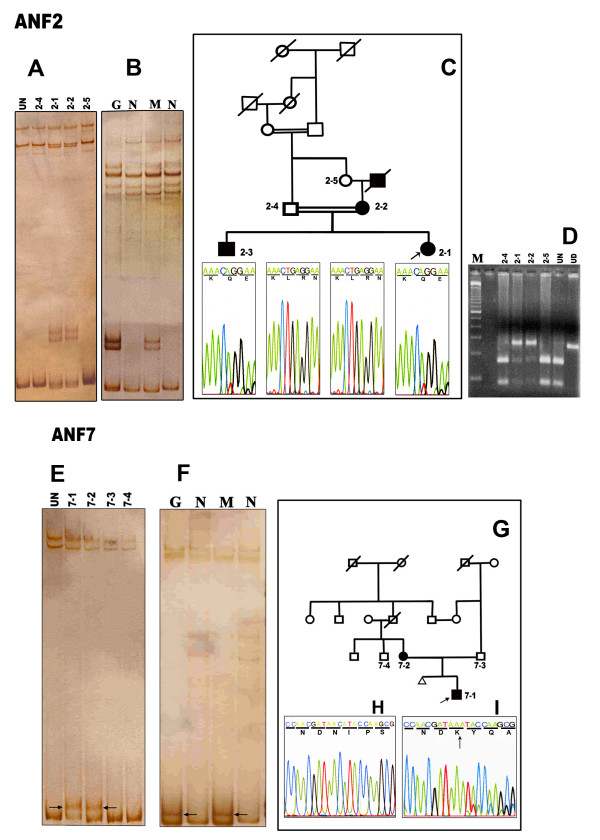Figure 2.
Mutation analysis of two unrelated families, ANF2 and ANF7. A. SSCP gel stained with silver nitrate showing unaffected members (2–4, 2–5) and the unusual band shift in affected members (2–1, 2–2), and normal bands in an unrelated unaffected control (lane 1). B. Identical banding patterns were obtained from the cloned mutant (M) and the genomic mutant (G) DNA on silver stained polyacylamide gels. N represents normal alleles. C. Three generation aniridic pedigree showing the affected and unaffected members and sequencing results of cloned mutant alleles showing the mutant (c.1174delTG) and wild-type alleles of exon 10. D. Restriction digestion analysis: PCR products of the family ANF2 showed heterozygosity (2–1, 2–2) for the mutant allele (243 bp, 160 bp and 83 bp). The wild type shows bands at 160 bp and 83 bp (2–4, 2–5, UN) when digested with DdeI. UN represents an unaffected control. UD represents undigested PCR product of exon 10. E. Polyacrylamide gel showing the bandshift in affected members (7–1, 7–2) but no shift on normal family members or unrelated controls (UN) (UN, 7–3, 7–4) of family ANF7. F. Allele specific clones were isolated to confirm the correct clone (M) compared with genomic PCR (G). G. The pedigree showing the two-generation aniridic family (filled-affected, unfilled-unaffected). H. Sequence of the unaffected father showing wild type PAX6. I. Sequencing of cloned alleles revealed the presence of single cytosine residue deletion in exon 6 in the mutants.

